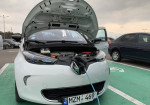Audi marchează 40 de ani de la construcţia primului motor cu cinci cilindri
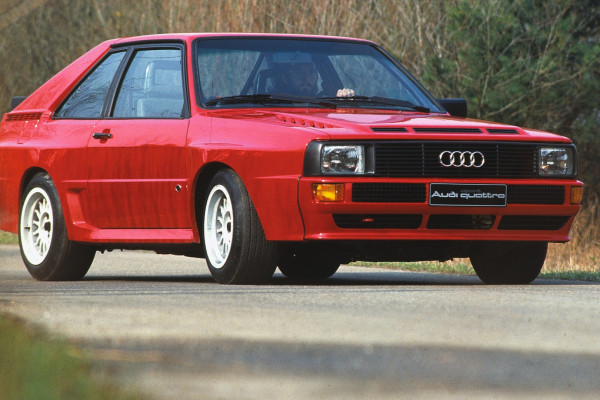
De Redactor AE | 31 August, 2016
Şi în casa producătorului de automobile de la Ingolstadt sunt motive de bucurie. Germanii au marcat recent (30 august) 40 de ani de la construcţia primului motor cu cinci pistoane. Unitatea pe benzină şi-a făcut debutul în anul 1976 pe modelul Audi 100 şi avea la bază conceptul motorului EA 827.
Audi înţelegea bine la acea vreme că are nevoie de mai mult "spaţiu" pentru manevre, iar motorul cu patru pistoane îi limita considerabil. Soluţia putea fi una singură, de a construi un motor nou, cu şase sau...de ce nu, cu cinci cilindri. Astfel a apărut în schiţele inginerilor, un propulsor cu volumul de 2.1 litri, echipat cu sistem de injecţie, ce dezvolta 136 de cai putere şi 185 Nm de cuplu motor. Ulterior, a fost propusă şi varianta pe carburatoare, cu un volum mult mai mic (1.9 litri) şi o putere de numai 115 CP cu 154 Newtonmetri.
Având la bază construcţia dată, Audi a construit în 1978 motorul diesel cu 2.0 litri, capabil să livreze 70 CP şi 123 Nm, în varianta aspirată natural, sau 87 cai putere şi 172 Nm, în versiunea echipată cu o turbină, upgrade care a fost posibil abia în 1984. Însă cel mai mult ne interesează evoluţia motorului pe benzină, care în 1979, trei ani mai târziu, a primit propria turbină, cu ajutorul căreia performanţele tehnice au urcat la 170 de cai putere şi 265 Nm de cuplu motor. Apariţia unui intercooler în circuit a permis inginerilor în anii 1980 să stoarcă 200 CP şi 285 Nm, motor prezentat deja pe modelul quattro, la Salonul Auto de la Geneva.
Pasionaţii de rally ştiu că acelaşi motor instalat pe bolidul din Grupa B, a putut fi modificat pentru a produce 360 de cai putere şi 450 Nm. Succesul în competiţii a generat noi şi noi versiuni, astfel că modelul B2, Audi Sport quattro, a cărui producţie a fost limitată la numai 214 unităţi, se putea lăuda cu 306 CP şi 350 Nm, extraşi din acelaşi volum, dar care a beneficiat de o chiulasă cu patru supape la cilindru.
Evoluţia acestui motor a cunoscut şi zile mai puţin strălucitoare, când în 1984 a debutat unitatea de 2.3 litri, echipată cu catalizator şi sistem de injecţie dirijat complet electronic, ce dezvolta 136 de CP şi 188 Nm. Însă la polul opus, se afla Audi Sport quattro S1 ce ascundea nu mai puţin de 598 de cai putere, storşi din acelaşi volum de 2.1 litri. Motor care i-a permis lui Walter Rohrl să urce pe podium în anii 1987 la rally-ul de viteză în pantă Pikes Peak Hill Climb.
Variaţiile de serie ale aceluiaşi motor, au continuat în 1988 cu propulsorul de 2.2 litri, echipat cu două catalizatoare, sistem de diasnostică, chiulasa cu 20 de supape şi alte mici modificări. Unitatea în cauză se regăsea pe Audi 200 quattro 20V (codul de caroserie C3), unde performanţele maxime se ridicau la 220 CP şi 309 Nm.
Sportul cu motor însă era mediul cel mai propice pentru agregatul germnialor, astfel că în 1989, la cursele din seria IMSA GTO, Audi 90 quattro se prezenta cu cel mai puternic propulsor cu cinci cilindre din lume! Acesta dezvolta o putere uriaşă limitată la 720 CP şi tot atâţia Newtonmetri.
Mai aproape de "era noastră", în 1991, Audi S4 primeşte motorul de 2.2 litri, cu 230 CP şi 350 Nm iar trei ani mai târziu debutează Audi RS2 (B4) cu 315 cai putere şi 410 Nm, extraşi din acelaşi volum. Abia în 2009, capacitatea cilindrică a motorului a crescut până la 2.5 litri, aşa cum s-a prezentat motorul sub capota lui Audi TT RS, unde punea la dispoziţie un total de 340 cai putere şi 450 Nm. Versiunea RS plus le-a adus fanilor un nou motiv de bucurie după ce inginerii au reuşit să mai înghesuie 20 de CP şi vreo 15 Nm. Rând pe rând, reţeta au preluat-o modelele RS3 Sportback cu 367 CP şi 465 Nm, iar generaţia de astăzi a lui TT RS se poate lăuda deja cu nu mai puţin de 400 cai putere şi 480 Nm de cuplu motor.
[caption id="attachment_68489" align="alignnone" width="1920"]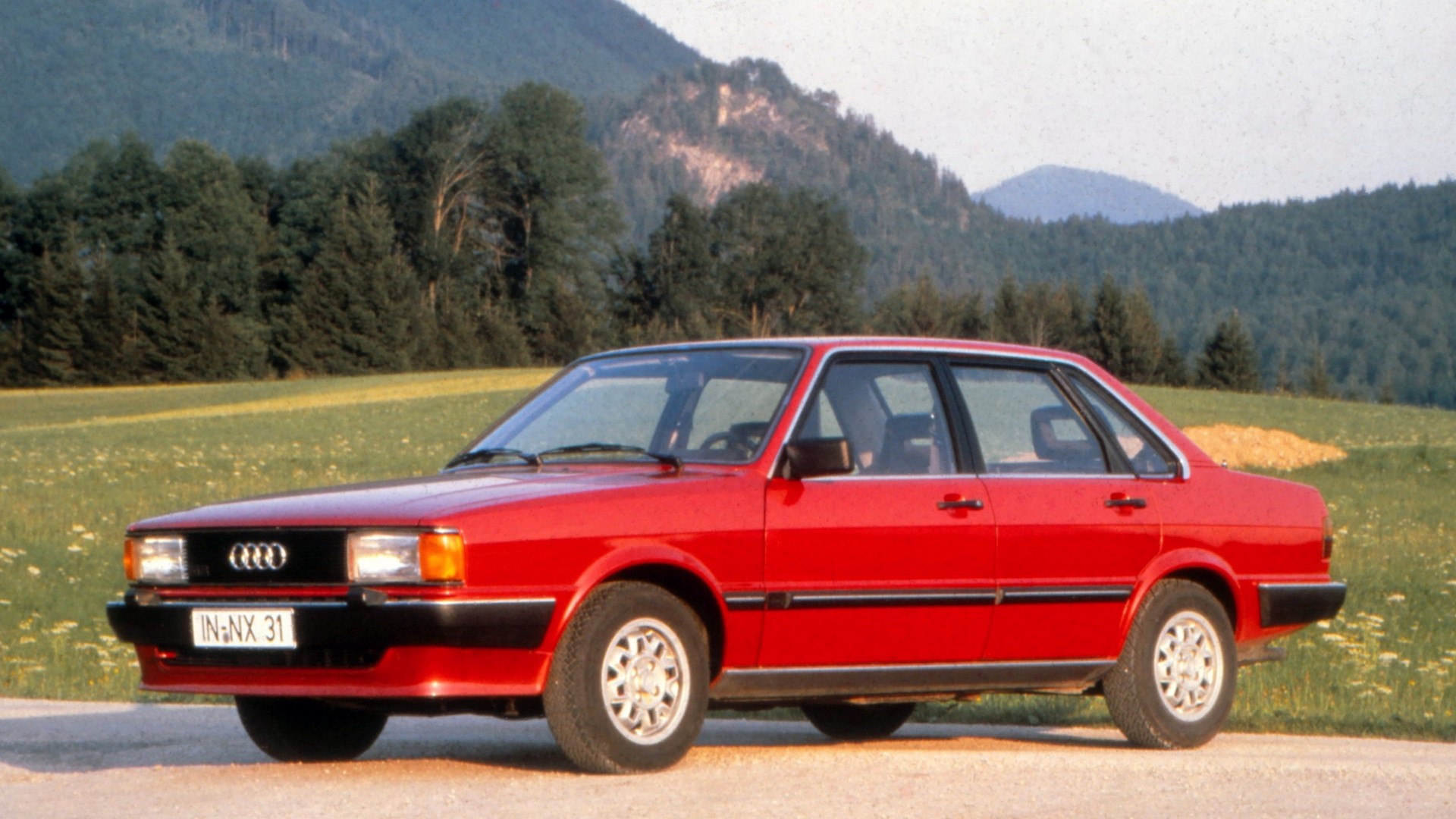 1978: five-cylinder carbureted engine:
1978: five-cylinder carbureted engine:
In April 1978, the five-cylinder carbureted version with an output of 85 kW (115 hp) replaces the basic twoliter four-cylinder version in the Audi 100 (C2). The new 1.9-liter unit produces maximum power at 5,400 revs and delivers 154 newton meters (113.58 lb-ft) of torque to the crankshaft at 3,700 rpm. The engine is used in the Audi 100 5 (C2), the Audi 80 CD (B2), the Audi Coupé GT 5S (B2) and in the Audi 100 (C3).[/caption]
[caption id="attachment_68490" align="alignnone" width="1920"]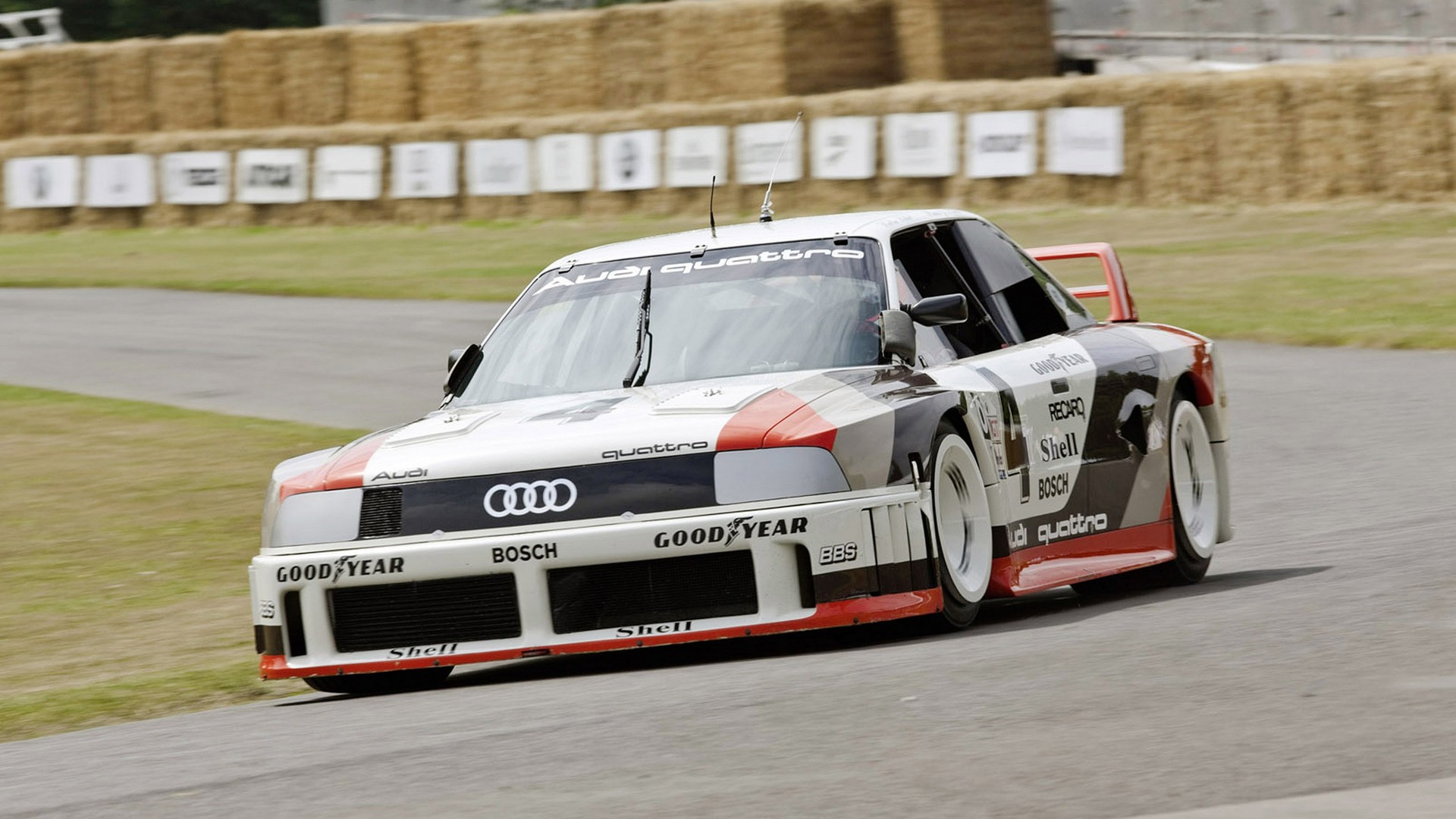 1989: most powerful five-cylinder works engine in motorsport:
1989: most powerful five-cylinder works engine in motorsport:
At the 1989 IMSA GTO in the USA, the Audi 90 quattro competes in its races with the most powerful fivecylinder works engine. The turbocharged aluminum engine is a 2.2-liter high-performance unit specially designed for racing. It develops 530 kW (720 hp) at 7,500 revolutions per minute and delivers 720 newton meters (531.04 lb-ft) of torque at 6,000 rpm. Overall, the Audi 90 quattro IMSA GTO wins seven races in the American touring car series in the 1989 season.[/caption]
[caption id="attachment_68491" align="alignnone" width="1920"]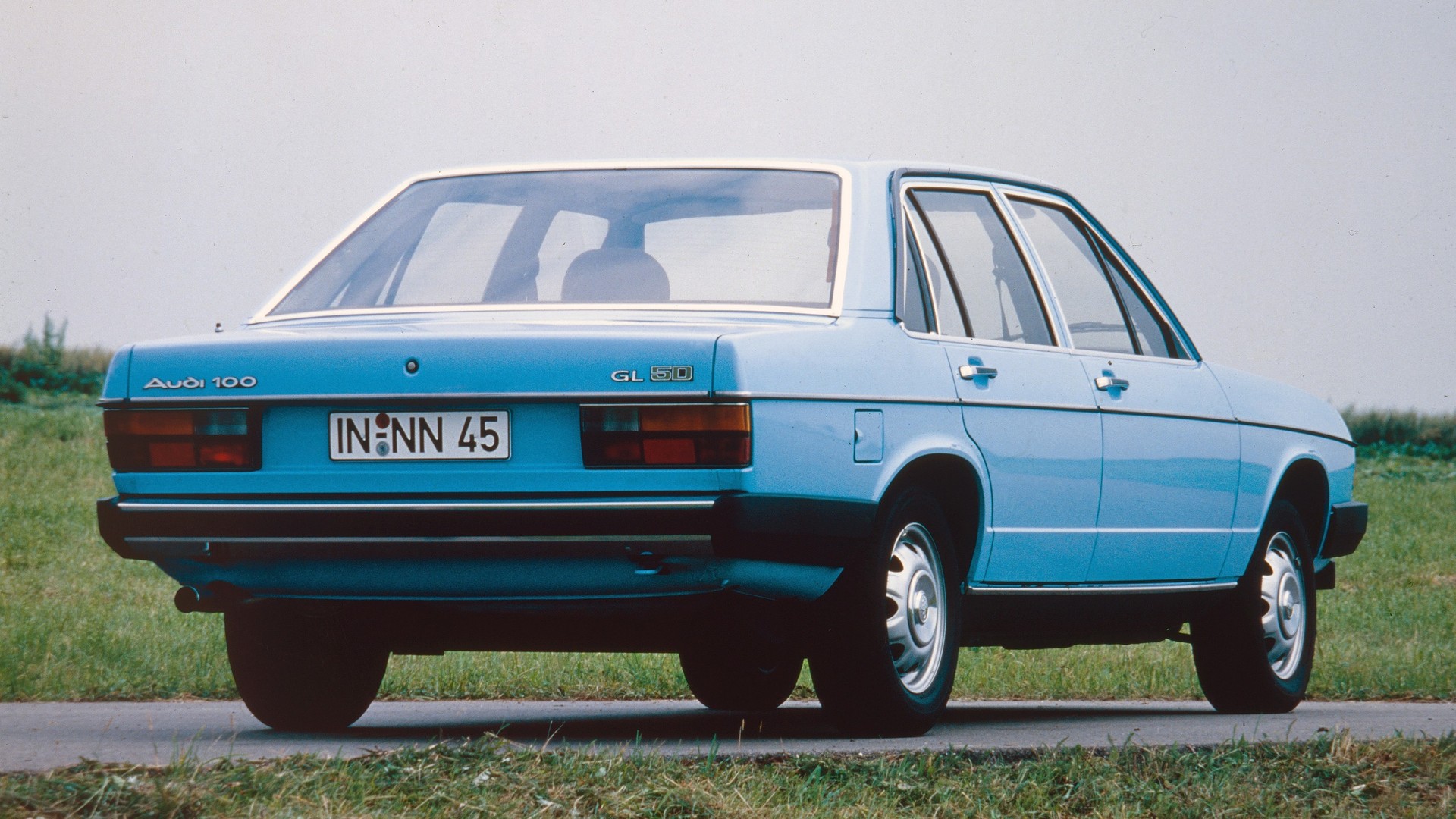 1978: first five-cylinder diesel:
1978: first five-cylinder diesel:
In 1978, Audi presents its first diesel model for the Audi 100 (C2). The five-cylinder naturally aspirated engine with a displacement of two liters develops 51 kW (70 hp) and 123 newton meters (90.72 lb-ft) of torque. It also powers the next-generation C3, propelling both the sedans and the Avant versions. From 1984, there is a turbocharged engine with an output of 64 kW (87 hp) and 172 newton meters (126.86 lb-ft) of torque.[/caption]
[caption id="attachment_68492" align="alignnone" width="1920"]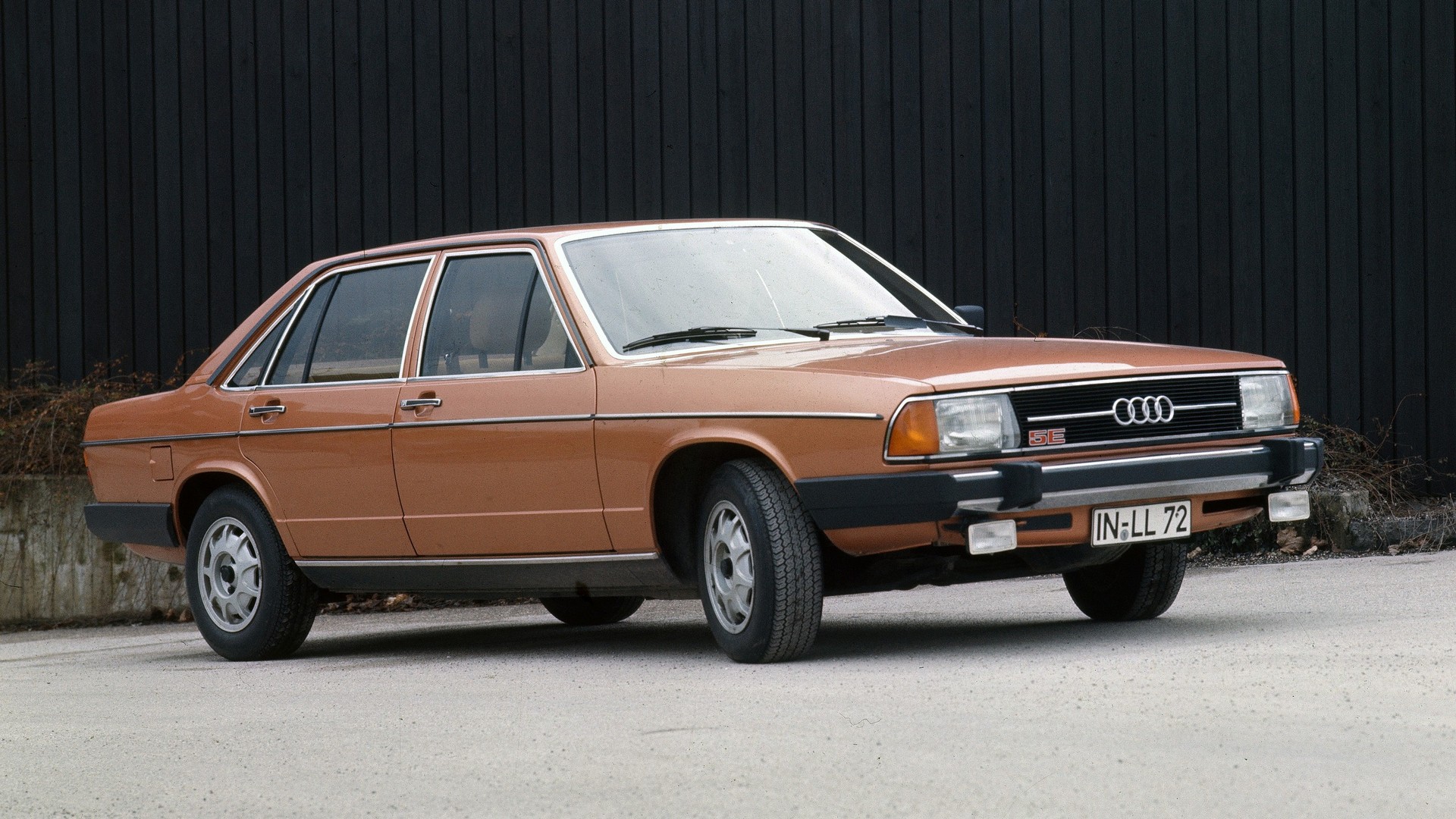 1976: first five-cylinder gasoline engine in the automotive industry:
1976: first five-cylinder gasoline engine in the automotive industry:
In August 1976, Audi introduces the second-generation Audi 100 (C2) in Luxembourg. For the first time, power is provided by a five-cylinder gasoline engine in a model from the brand with the four rings. The fuel-injected engine with a displacement of 2,144 cc develops 110 kW (136 hp) at 5,700 revolutions per minute. The maximum torque of 185 newton meters (136.45 lb-ft) is available at 4,200 rpm. The market launch of the Audi 100 (C2) follows in March 1977. From September 1979, the five-cylinder engine is also available in the Audi 200; from August 1982, it is fitted in the successor to the C2, the Audi 100 C3.[/caption]
[caption id="attachment_68493" align="alignnone" width="1920"]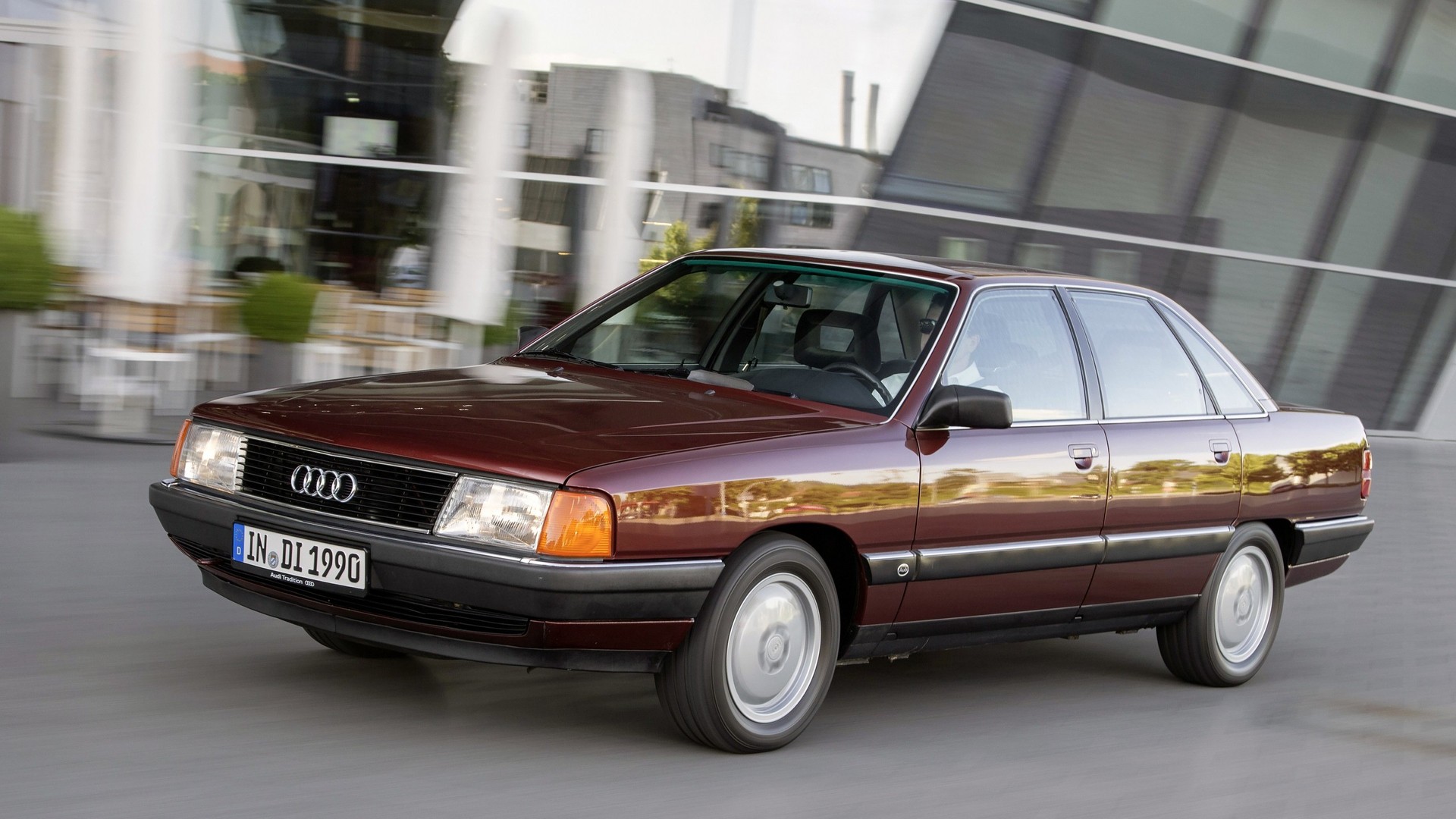 1989: first five-cylinder turbocharged direct-injection diesel engine in a production car:
1989: first five-cylinder turbocharged direct-injection diesel engine in a production car:
Audi presents another milestone in the automotive history in 1989 at the International Motor Show in Frankfurt am Main: the Audi 100 TDI. The first fivecylinder turbocharged diesel with direct injection for a production car produces 88 kW (120 hp) from a displacement of 2.5 liters and delivers 265 newton meters (195.45 lb-ft) of torque to the crankshaft. It is used in the C3 and in the C4 – from 1994 with an output of 103 kW (140 hp) and 290 newton meters (213.89 lb-ft) of torque.[/caption]
[caption id="attachment_68494" align="alignnone" width="1920"] 1980: five-cylinder gasoline engine with turbocharger:
1980: five-cylinder gasoline engine with turbocharger:
In 1980, the Audi 200 5T (C2) comes on to the market, which is powered by the first turbocharged gasoline engine from the brand with the four rings. From a displacement of 2,144 cc, the five-cylinder unit produces 125 kW (170 hp) at 5,300 revolutions per minute and 265 newton meters (195.45 lb-ft) of torque at 3,300 rpm. The Audi 200 5T (C2) is the first Audi in the luxury class and features the lavish equipment of the Audi 100 CD as standard.[/caption]
[caption id="attachment_68495" align="alignnone" width="1920"]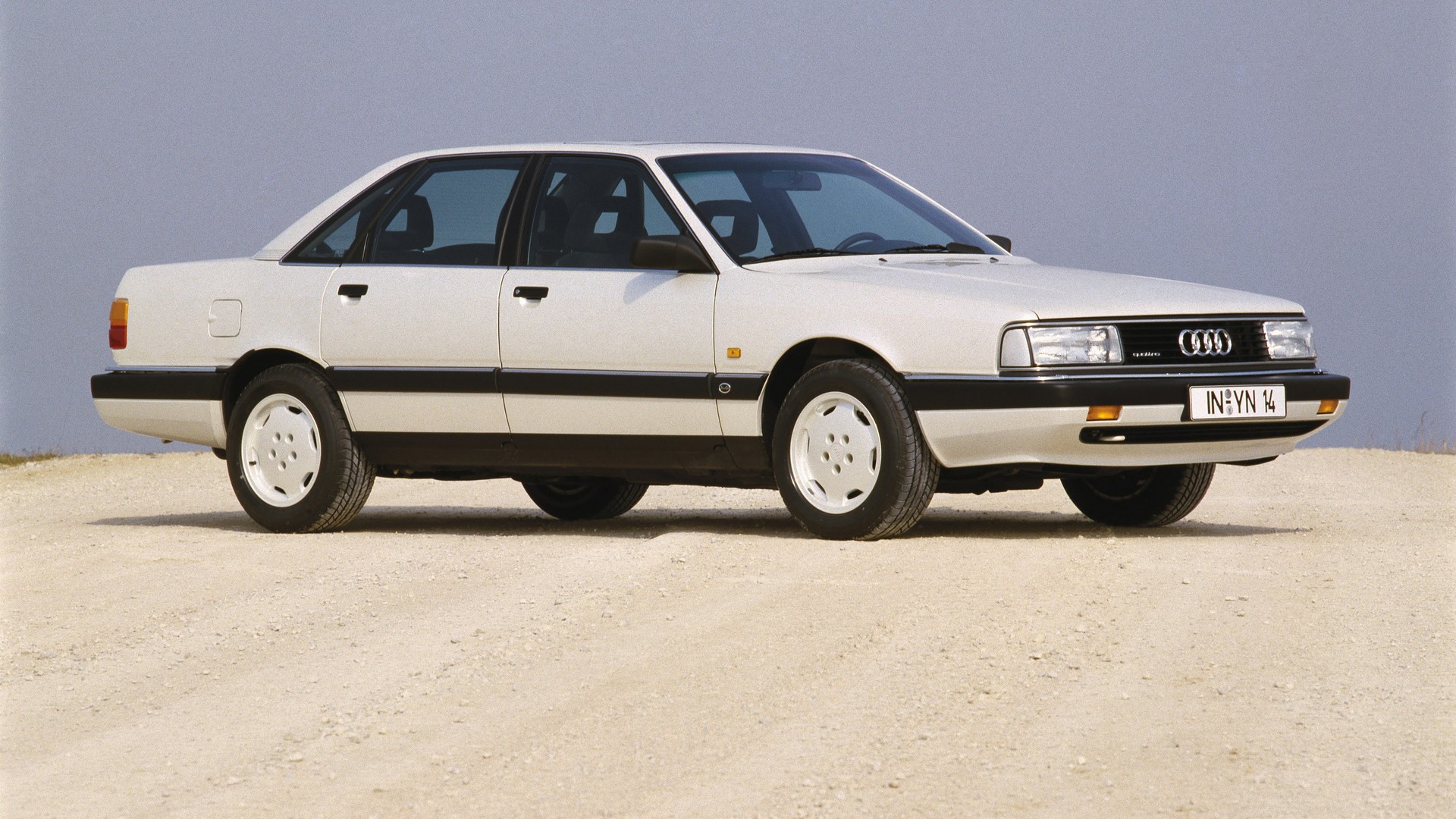 1988: five-cylinder gasoline engine with four-valve technology, turbocharger and catalytic converter (S engine):
1988: five-cylinder gasoline engine with four-valve technology, turbocharger and catalytic converter (S engine):
With two catalytic converters, four-valve technology, a closed tank venting system and a diagnostic system, this powerplant offers a very high standard of emissions control and technology. It is first available in the Audi 200 quattro 20V (C3), then in the Audi quattro 20V (B2) a year later and in the Audi S2 Coupe (B3) in 1990. The five-cylinder turbocharged engine has a displacement of 2,226 cc and delivers 162 kW (220 hp) at 5,700 revolutions per minute and 309 newton meters (227.91 lb-ft) of torque at 1,950 rpm.[/caption]
[caption id="attachment_68496" align="alignnone" width="1920"]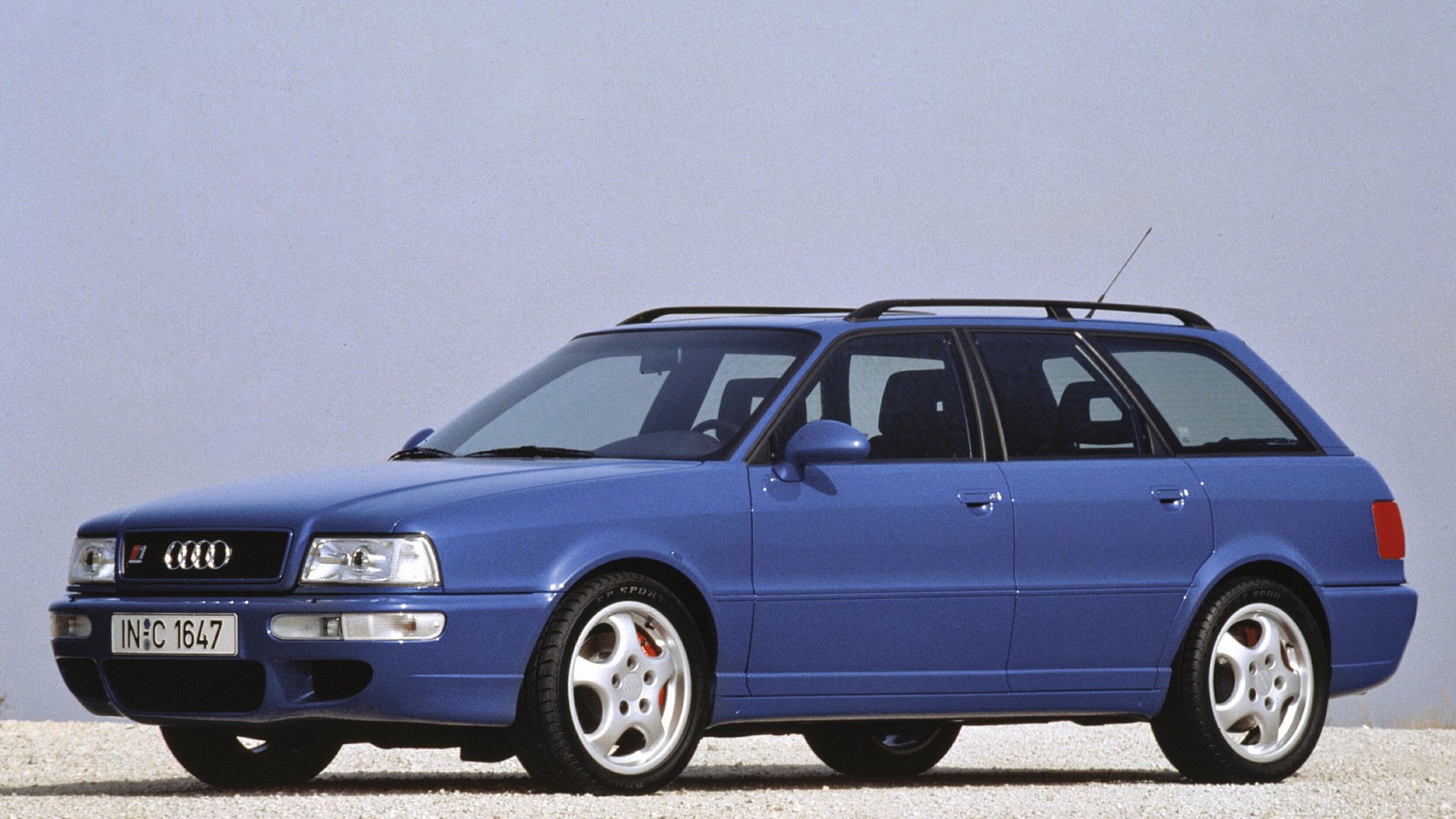 1994: first five-cylinder RS engine:
1994: first five-cylinder RS engine:
In 1994, the most powerful five-cylinder production engine built by Audi to date goes into action in the Audi Avant RS 2 (B4). With turbocharging, fuel injection and standard-fit emissions control, it produces 232 kW (315 hp) at 6,500 revolutions per minute from a displacement of 2,226 cc and delivers 410 newton meters (302.40 lb-ft) of torque at 3,000 rpm.[/caption]
[caption id="attachment_68497" align="alignnone" width="1920"] 1984: map-controlled five-cylinder gasoline engine with emissions control as standard:
1984: map-controlled five-cylinder gasoline engine with emissions control as standard:
In 1984, a completely new development appears. Audi is the first manufacturer to optimize the five-cylinder engine with a fully electronic map-controlled ignition system and a catalytic converter as standard. From 2,309 cc, it produces 100 kW (136 hp) at 5,600 rpm and 188 newton meters (138.66 lb-ft) of torque at 3,500 revolutions per minute. The most widely used five-cylinder engine from Audi is found in the Audi 100 2.3E (C3), the Audi Coupe 2.3E (B3) and in the Audi 90 2.3 E (B3). From 1990, it also powers the Audi 100 2.3E (C4) and a year later the Audi 80 2.3E (B4) and the Audi Cabriolet 2.3E. Here, it delivers 98 kW (133 hp) at 5,600 revolutions per minute and 186 newton meters (137.19 lb-ft) at 4,000 rpm.[/caption]
[caption id="attachment_68498" align="alignnone" width="1920"] 1984: map-controlled five-cylinder gasoline engine with emissions control as standard:
1984: map-controlled five-cylinder gasoline engine with emissions control as standard:
In 1984, a completely new development appears. Audi is the first manufacturer to optimize the five-cylinder engine with a fully electronic map-controlled ignition system and a catalytic converter as standard. From 2,309 cc, it produces 100 kW (136 hp) at 5,600 rpm and 188 newton meters (138.66 lb-ft) of torque at 3,500 revolutions per minute. The most widely used five-cylinder engine from Audi is found in the Audi 100 2.3E (C3), the Audi Coupe 2.3E (B3) and in the Audi 90 2.3 E (B3). From 1990, it also powers the Audi 100 2.3E (C4) and a year later the Audi 80 2.3E (B4) and the Audi Cabriolet 2.3E. Here, it delivers 98 kW (133 hp) at 5,600 revolutions per minute and 186 newton meters (137.19 lb-ft) at 4,000 rpm.[/caption]
[caption id="attachment_68499" align="alignnone" width="1920"]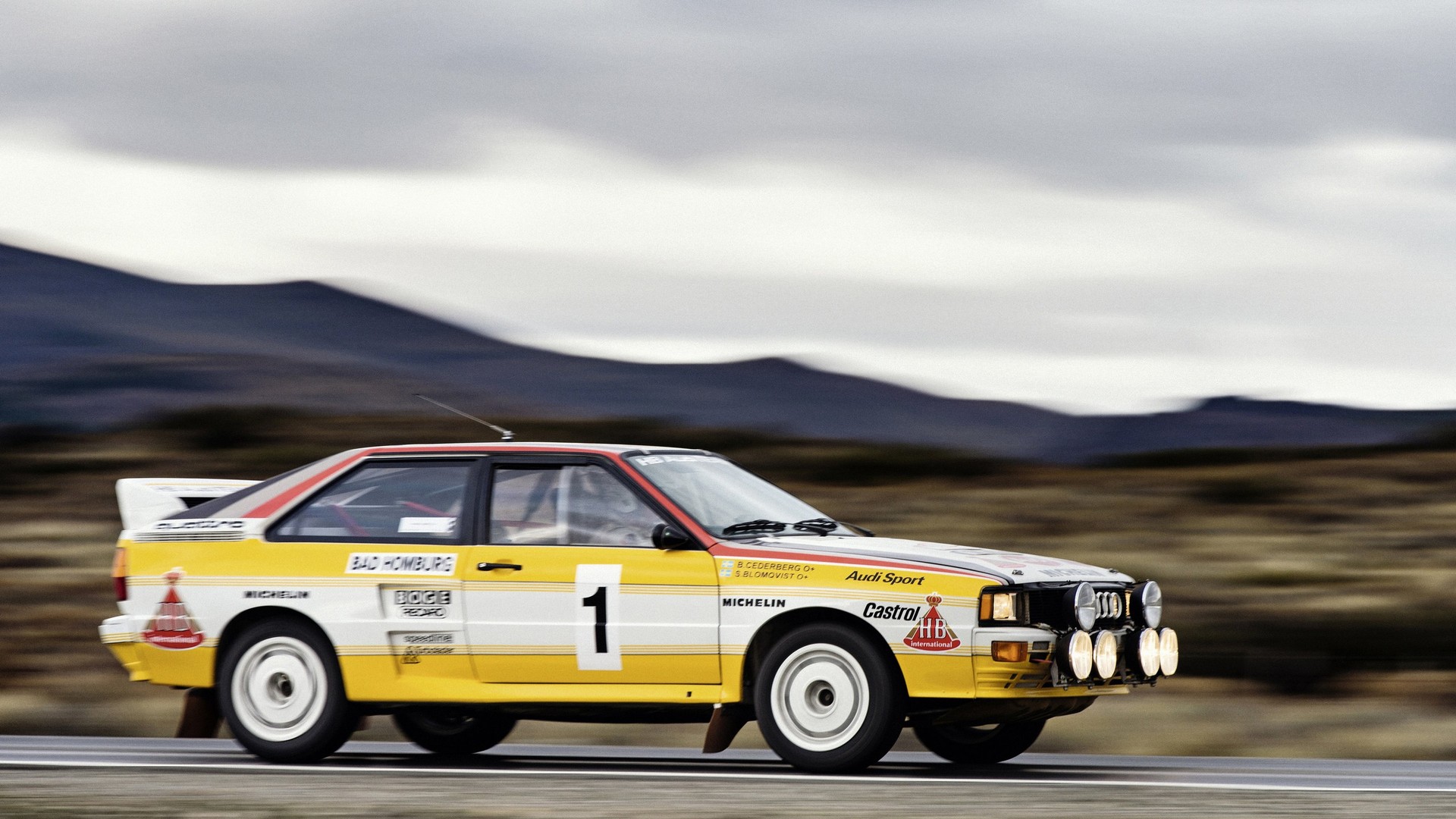 1983: five-cylinder engine triumphant in rallying:
1983: five-cylinder engine triumphant in rallying:
In the 1983 Corsica Rally, Audi competes for the first time with the Audi quattro A2, Group B. Its 2.1-liter turbocharged five-cylinder inline engine produces 265 kW (360 hp) at 6,500 revolutions per minute and delivers 450 newton meters (331.90 lb-ft) of torque at 4,000 rpm. At the end of the season, the Finn Hannu Mikkola wins the drivers’ title in this car. One year later, the Swede Stig Blomqvist replicates this success: he becomes world rally champion, while Audi wins the manufacturers’ world rally championship for the second time after 1982.[/caption]
[caption id="attachment_68500" align="alignnone" width="1920"] 2009: 2.5 TFSI with gasoline direct injection, turbocharger and intercooler:
2009: 2.5 TFSI with gasoline direct injection, turbocharger and intercooler:
30 years after the first five-cylinder turbocharged gasoline engine was presented, Audi once again introduces a model with a five-cylinder gasoline engine and turbocharger at the Geneva Motor Show: the TT RS. The powerplant delivers 250 kW (340 hp) at 6,500 revolutions per minute from 2,480 cc and 450 newton meters (331.90 lb-ft) at 5,300 rpm. From 2011, this engine is also used in the RS 3 Sportback and from 2014 in the updated RS Q3. In the 2012 TT RS plus, the engine produces 265 kW (360 hp) at 6,700 revolutions per minute and develops 465 newton meters (342.97 lb-ft) of torque at 5,400 rpm.[/caption]
[caption id="attachment_68501" align="alignnone" width="1920"] 2015: 2.5 TFSI with gasoline direct injection, turbocharger and intercooler:
2015: 2.5 TFSI with gasoline direct injection, turbocharger and intercooler:
In the summer of 2015, the second-generation RS 3 Sportback* appears – the most powerful car in the premium compact segment with an output of 270 kW (367 hp). The combination of turbocharging and direct injection permits a high compression ratio of 10:1 and correspondingly good efficiency. The five-cylinder inline engine delivers a maximum of 465 newton meters (342.97 lb-ft) to the crankshaft. This torque is available from as low as 1,625 revolutions per minute and remains constant up to 5,550 rpm. Since spring 2016, Audi has been using the optimized version of the powerplant in the Audi RS Q3 performance* too.[/caption]
[caption id="attachment_68502" align="alignnone" width="1920"] 1980: five-cylinder gasoline engine with turbocharger and intercooler:
1980: five-cylinder gasoline engine with turbocharger and intercooler:
In 1980 at the Geneva Motor Show, Audi unveils the Audi quattro (B2), known as the “Ur-quattro” from the mid-1990s. It uses the powerplant from the Audi 200 5T (C2), but features an intercooler. As a result, the turbocharged engine achieves a higher output of 147 kW (200 hp) at 5,500 revolutions per minute and 285 newton meters (210.21 lb-ft) of torque at 3,500 rpm. The body of the Audi quattro is based on the Audi Coupe (B2), which in turn is based on the Audi 80. Flared fenders, bulkier bumpers and sills as well as a larger rear spoiler distinguish the Audi quattro from the Coupe.[/caption]
[caption id="attachment_68503" align="alignnone" width="1920"] 2015: 2.5 TFSI with gasoline direct injection, turbocharger and intercooler:
2015: 2.5 TFSI with gasoline direct injection, turbocharger and intercooler:
In the summer of 2015, the second-generation RS 3 Sportback* appears – the most powerful car in the premium compact segment with an output of 270 kW (367 hp). The combination of turbocharging and direct injection permits a high compression ratio of 10:1 and correspondingly good efficiency. The five-cylinder inline engine delivers a maximum of 465 newton meters (342.97 lb-ft) to the crankshaft. This torque is available from as low as 1,625 revolutions per minute and remains constant up to 5,550 rpm. Since spring 2016, Audi has been using the optimized version of the powerplant in the Audi RS Q3 performance* too.[/caption]
[caption id="attachment_68504" align="alignnone" width="1920"]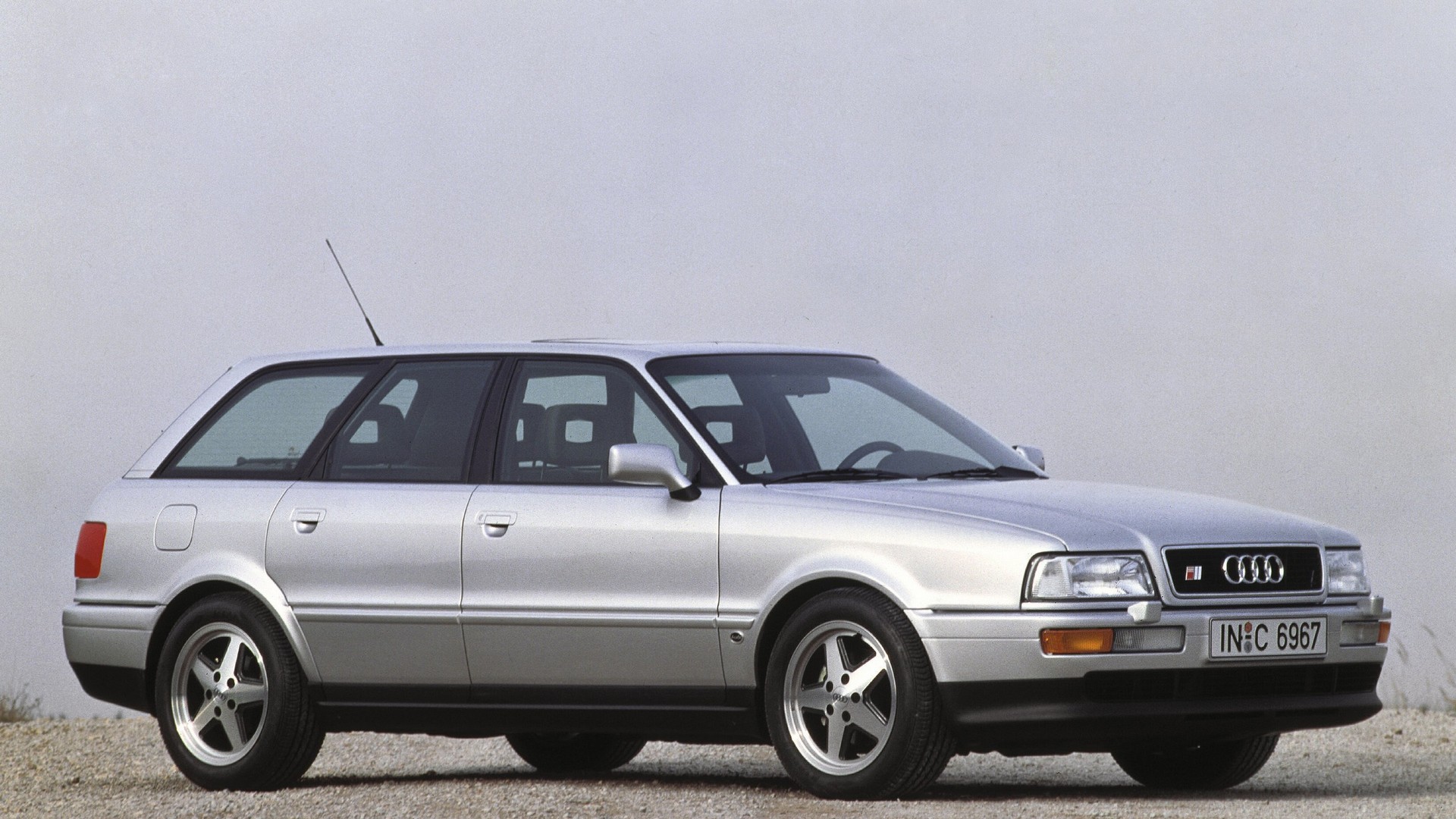 1991: performance-enhanced five-cylinder S engine with overboost control:
1991: performance-enhanced five-cylinder S engine with overboost control:
In the 1991 Audi S4, the Sport version of the Audi 100 (C4), a turbocharged 2.2-liter 20-valve five-cylinder inline engine is at work. It develops 169 kW (230 hp) at 5,900 rpm. Thanks to a brief increase in boost pressure, a peak torque of 350 newton meters (258.15) is achieved at 1,950 revolutions per minute. The engine also powers the Audi S2 Avant (B4) and the Audi S2 Coupé (B3). In 1994, the Audi S4 becomes known as the Audi S6.[/caption]
[caption id="attachment_68506" align="alignnone" width="1920"]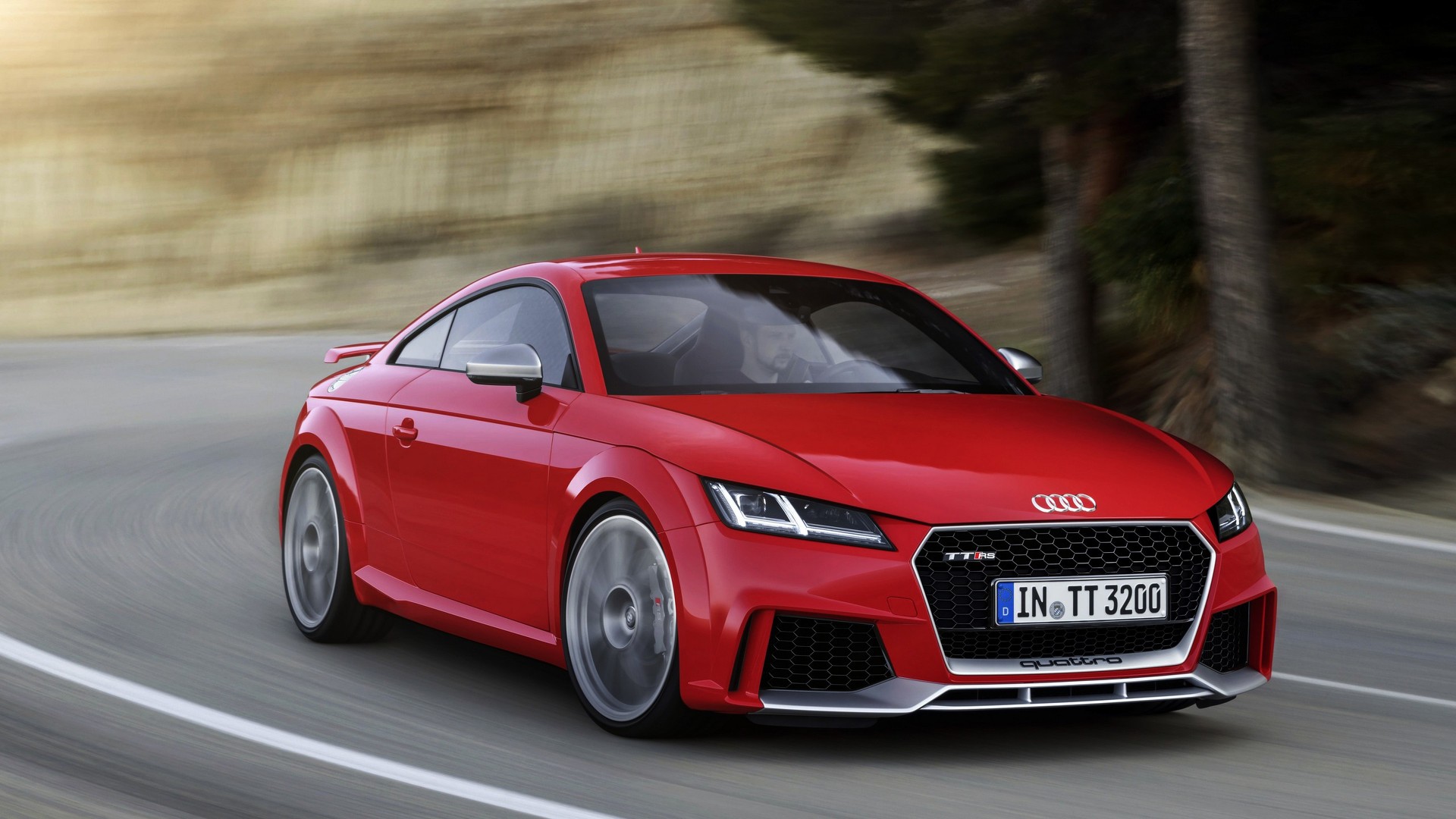 2016: 2.5 TFSI with gasoline direct injection, turbocharger and intercooler:
2016: 2.5 TFSI with gasoline direct injection, turbocharger and intercooler:
At the Beijing Motor Show in 2016, Audi presents the new TT RS Coupe* and the new TT RS Roadster*. The five-cylinder unit has been enhanced in every area – with lightweight construction measures, reduced internal friction, increased power delivery. From an unchanged displacement of 2,480 cc, the turbocharged engine gains a good 17 percent increase in performance. With an output of 294 kW (400 hp) it is more potent than ever before. The maximum torque of 480 newton meters (354.03 lb-ft) is available between 1,700 and 5,850 revolutions per minute. It ensures outstanding pulling power, which accompanies the unmistakable five-cylinder sound.[/caption]
[caption id="attachment_68507" align="alignnone" width="1920"]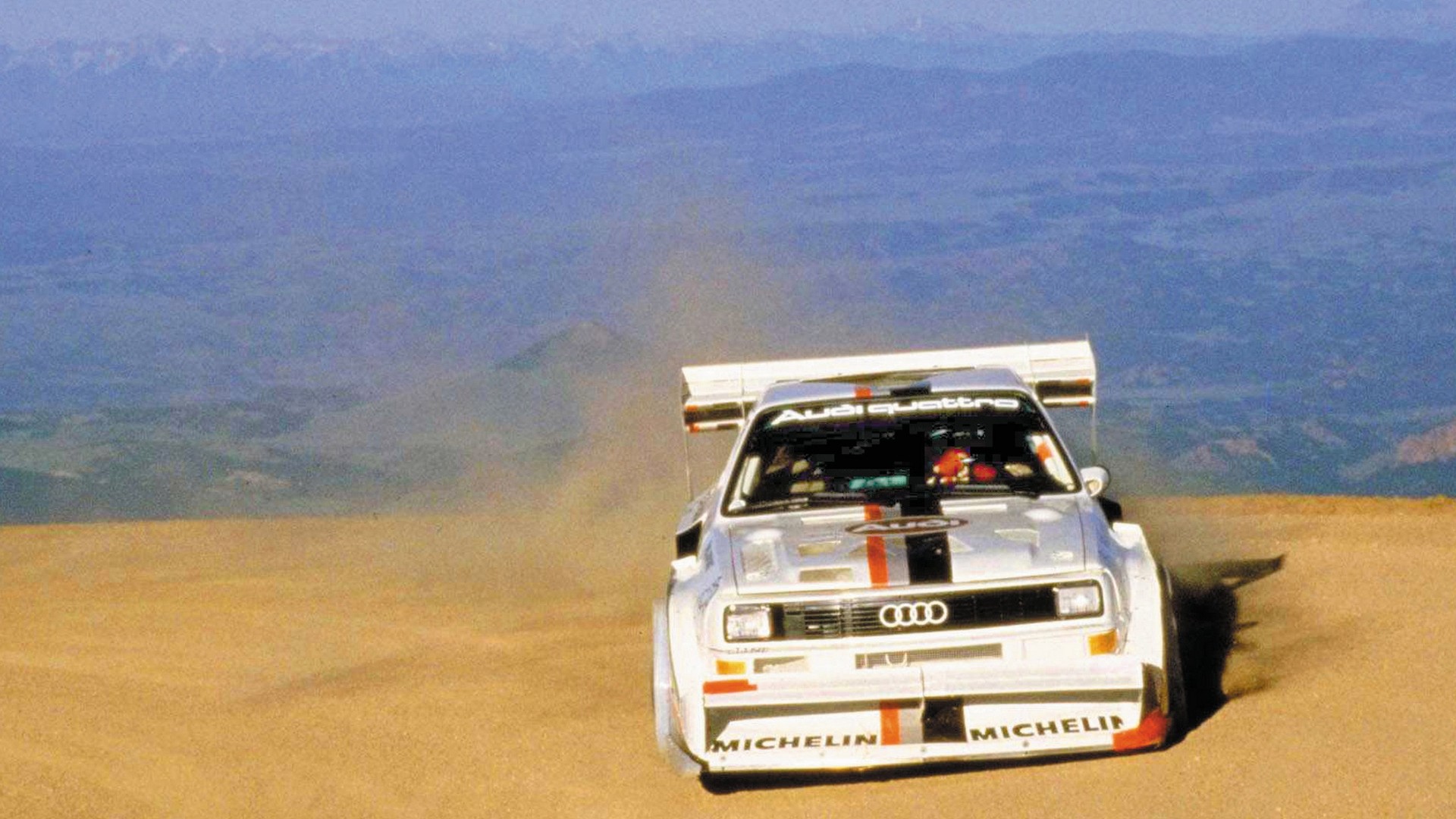 1987: world record at Pikes Peak with the Audi Sport quattro S1 (E2):
1987: world record at Pikes Peak with the Audi Sport quattro S1 (E2):
In 1987, Walter Röhrl wins the legendary Pikes Peak Hill Climb (USA) in the Audi Sport quattro S1 (E2), setting a new record. In 10 minutes and 47.85 seconds he conquers the almost 20-kilometer-long (12.43 mi) course with 156 bends and a difference in altitude of 1,439 meters (4721.13 ft). The 2.1-liter five-cylinder engine in the Audi Sport quattro S1 (E2) delivers 440 kW (598 hp) at 8,000 revolutions per minute and produces 590 newton meters (435.16 lb-ft) of torque at 5,500 rpm.[/caption]
[caption id="attachment_68508" align="alignnone" width="1920"]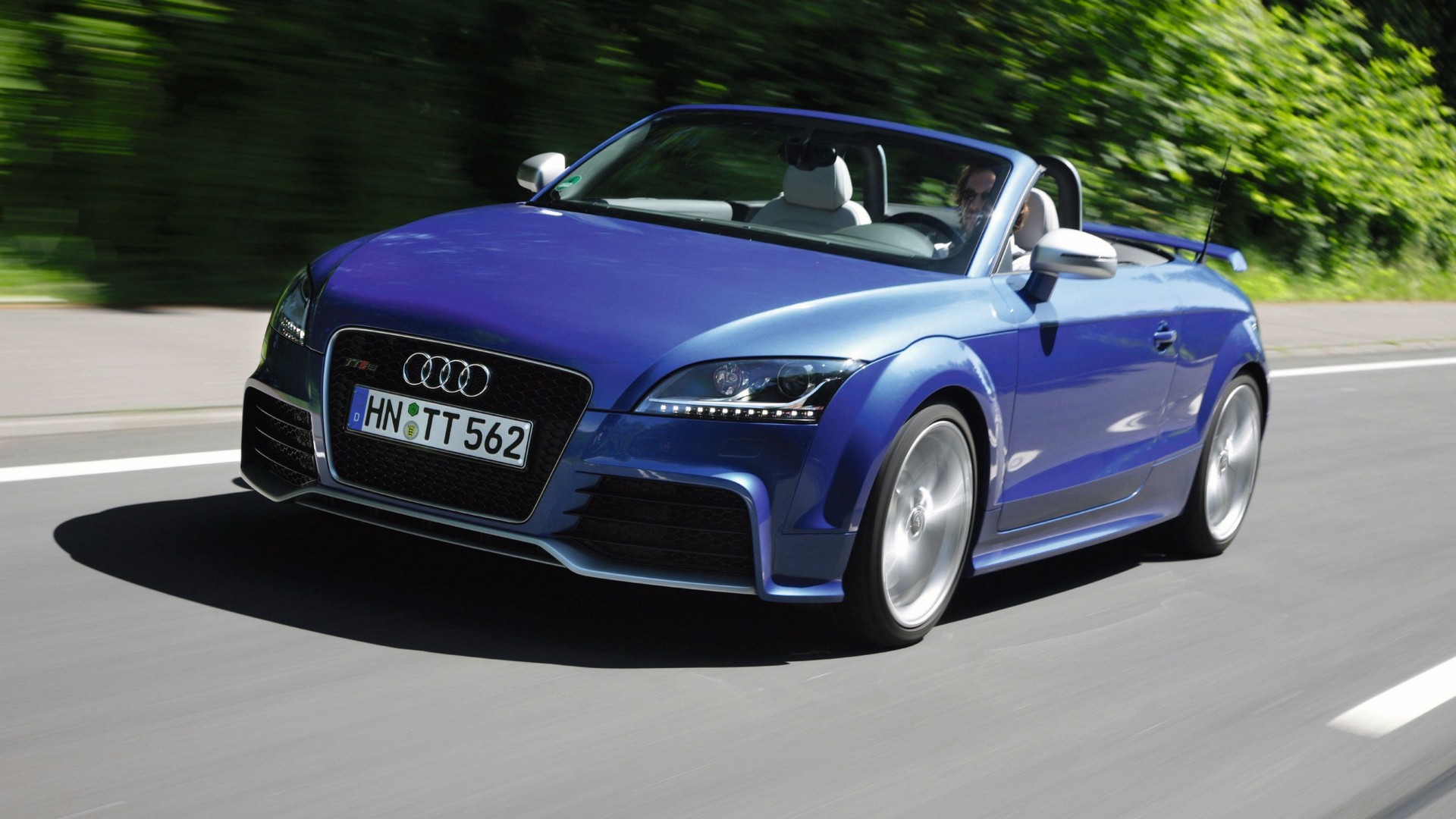 2009: 2.5 TFSI with gasoline direct injection, turbocharger and intercooler:
2009: 2.5 TFSI with gasoline direct injection, turbocharger and intercooler:
30 years after the first five-cylinder turbocharged gasoline engine was presented, Audi once again introduces a model with a five-cylinder gasoline engine and turbocharger at the Geneva Motor Show: the TT RS. The powerplant delivers 250 kW (340 hp) at 6,500 revolutions per minute from 2,480 cc and 450 newton meters (331.90 lb-ft) at 5,300 rpm. From 2011, this engine is also used in the RS 3 Sportback and from 2014 in the updated RS Q3. In the 2012 TT RS plus, the engine produces 265 kW (360 hp) at 6,700 revolutions per minute and develops 465 newton meters (342.97 lb-ft) of torque at 5,400 rpm.[/caption]
[caption id="attachment_68509" align="alignnone" width="1920"]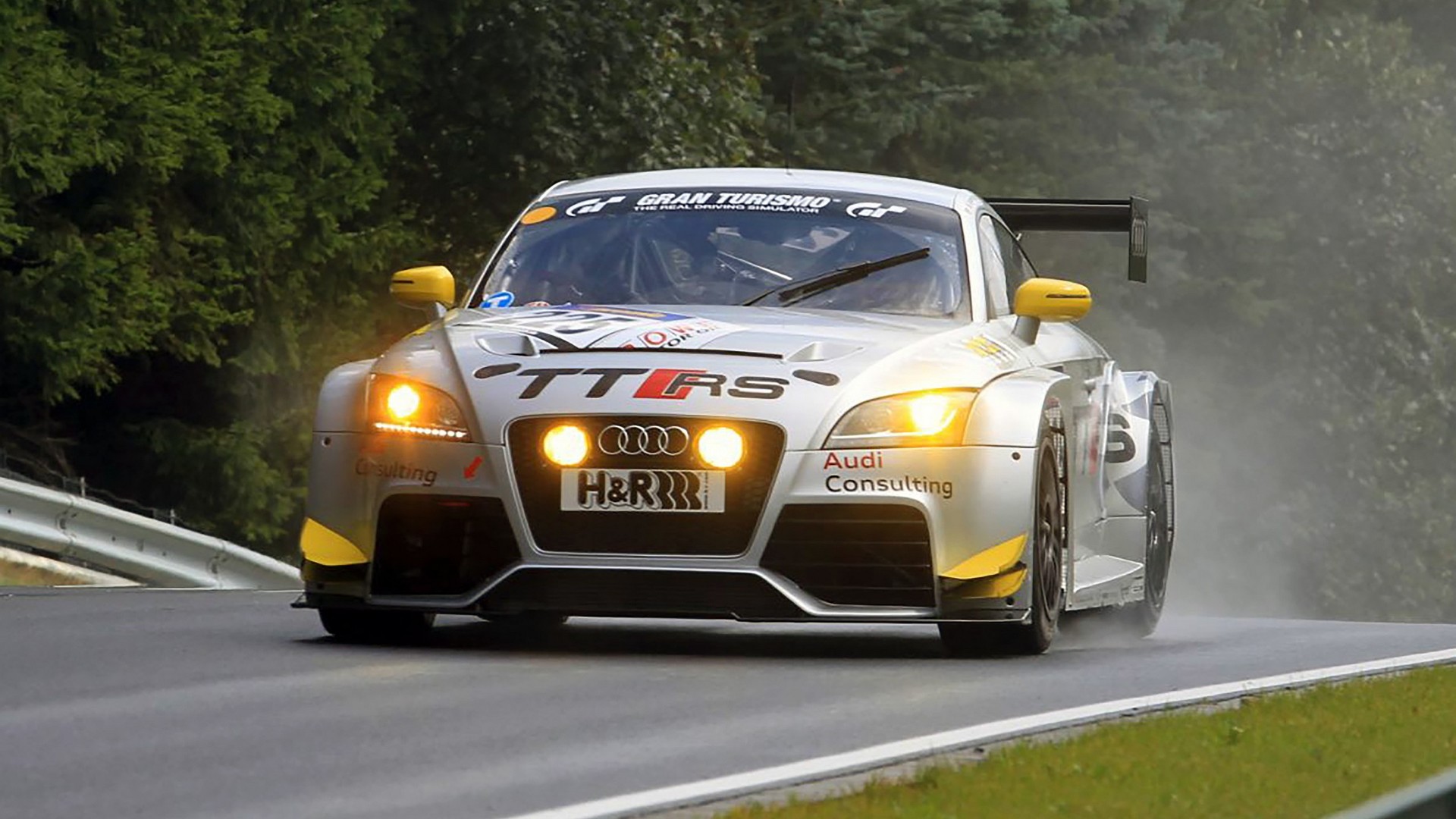 2010: Audi TT RS in races:
2010: Audi TT RS in races:
In 2010, Audi starts its motorsport activities with the TT RS. The racing car developed for endurance racing is powered by the five-cylinder engine from the production model. Following improvements to the intercooler and exhaust system, the powerplant delivers 280 kW (380 hp) at 5,800 revolutions per minute. The maximum torque of 500 newton meters (368.78 lb-ft) develops at 2,500 rpm. In the VLN Endurance Championship of 2010 and 2011, the frontwheel-drive racing car notches up several victories in the SP4T class up to 2.5 liters’ capacity. In August 2011, it clinches overall victory in the 6-hour race on the Nürburgring. Audi achieves further success with the
TT RS in the 24-hour race in the Eifel in 2011, where it takes class victory.[/caption]
[caption id="attachment_68510" align="alignnone" width="1920"]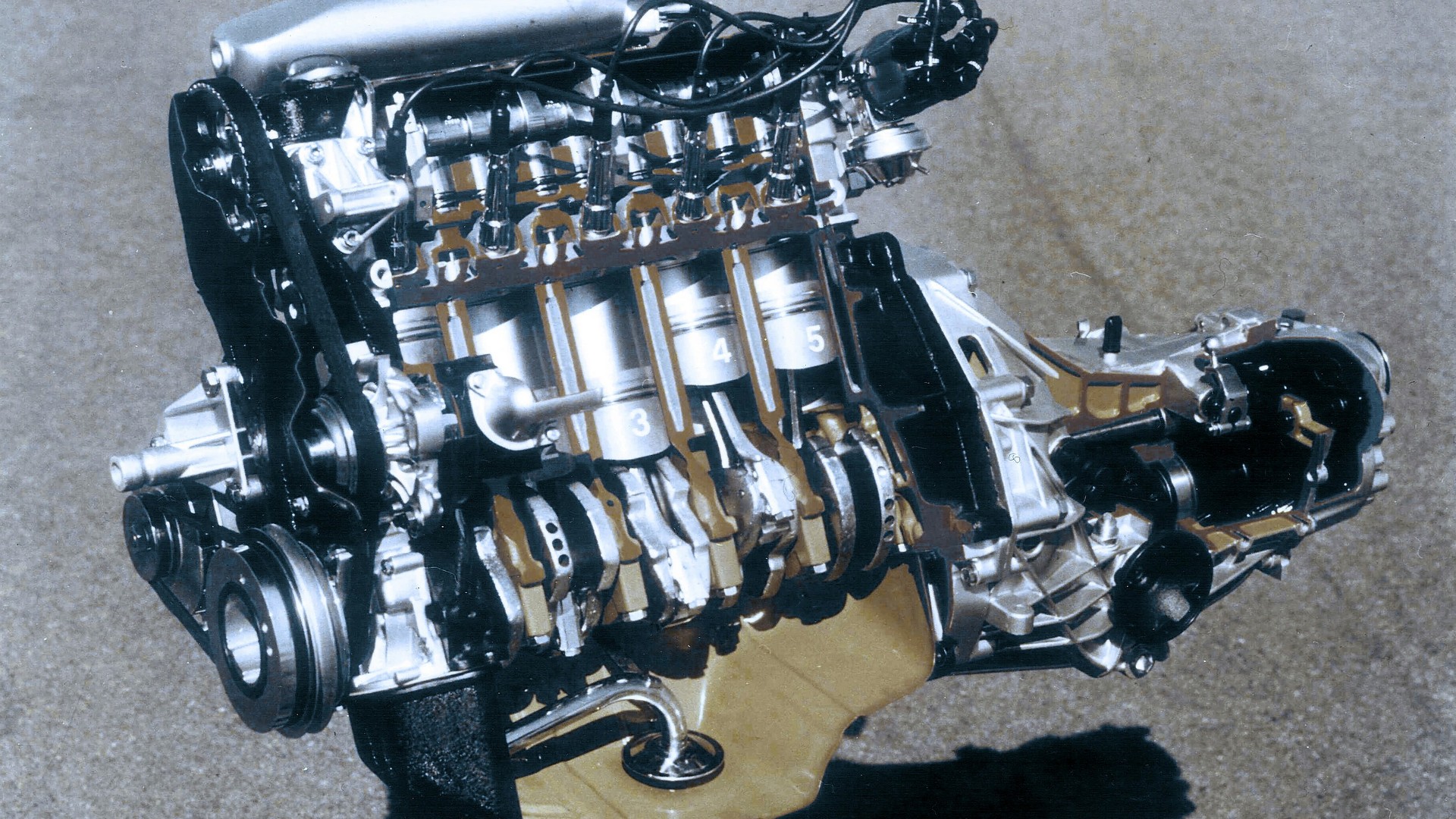 1976: World premiere of the first Audi five-cylinder gasoline engine[/caption]
1976: World premiere of the first Audi five-cylinder gasoline engine[/caption]







